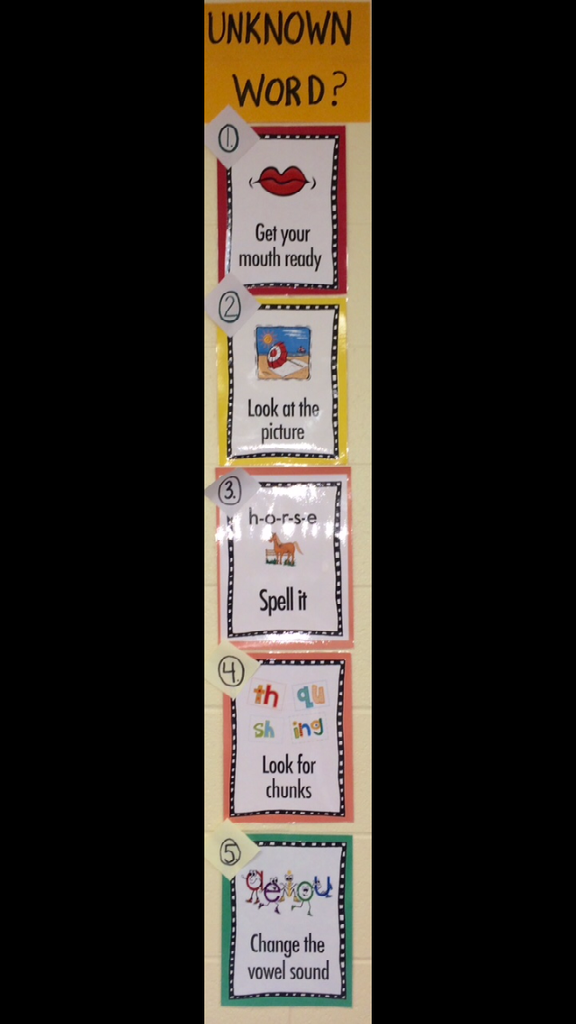Unknown Word Strategies Process for an ILES 1st grader
When independently reading, all students will come across a word that is unknown to them. At Indian Lake Elementary, we practice and teach specific word attack strategies that can help. I choose to use them in a particular order so that students can begin to internalize a process that they can use at school or home and feel successful. Sometimes as a parent, you might say to your child, "Sound it out!" This was acceptable in kindergarten, but in first grade it becomes troublesome. As students become better independent readers, words will tend to have more sounds/phonemes. A student can break apart the word into each sound/phoneme, but they are unable to juggle and maintain all the sounds in order to merge all the sounds back together. Hence the need for a process. Feel free to use these terms, the process and our Unknown Word Strategy bookmark with your child as they complete their nightly reading.

1. The initial step to our process is two-fold. This step along with the second step almost happen simultaneously. When a student gets to an unknown word, they need to immediately "Get their mouth ready." That means look at the onset/initial letter(s) and have your mouth say that first sound.
2. As soon as the student "Gets their mouth ready," he/she needs to "look up at the picture or photo". At this point in time, pictures REALLY tell the story for first graders. The child should be looking for something in the picture that begins with that initial sound. Sometimes these two steps will help them figure out the word without going any further. If the child is still unaware of the word, they need to move onto the next step.
Sometimes "Getting your mouth ready" and "Looking at the picture" do not provide enough support. We have another step that is brief. It seems pointless, but researchers far more intelligent than myself have proof that this helps students 40% of the time. There are some students that do not attend to the entire word. This step in the process forces them to. They just need to simply "Spell it (the word)". For example, h-o-r-s-e.
Directly after "Spell - it", students should try to identify any part(s) of the word they recognized as they attended to the entire word. That is why we call the next step "Look for hunks or chunks". I even refer to it as "Look for parts you know". There could be a hunk and chunk that we have studied, a word family, or maybe even a word wall word within the word. If students recognize a part, then they need to build or merge two sounds/phonemes at a time until they have decoded the word (e.g. The word "bring" has the "ing" chunk. Students can use the initial sound of "b" with the "er" sound to blend "br". Then all they need to do is merge "br" to the "ing" sound. We are ALWAYS focusing on building two sounds at a time!
Because of our English language, there are times when a student merges two phonemes at a time and decodes the word, yet it still doesn't make sense to them. For example, the word bread. The student will try to use the initial sound (has their mouth ready) and recognizes the chunk "ea" to make the "long e" sound. But when they read the word it sounds like breed. That is why our last step is "change the vowel sound". Instead of a "long e" sound for the first vowel, try the other sound for "e". Some students do this naturally and there are some that need this intentionally taught.